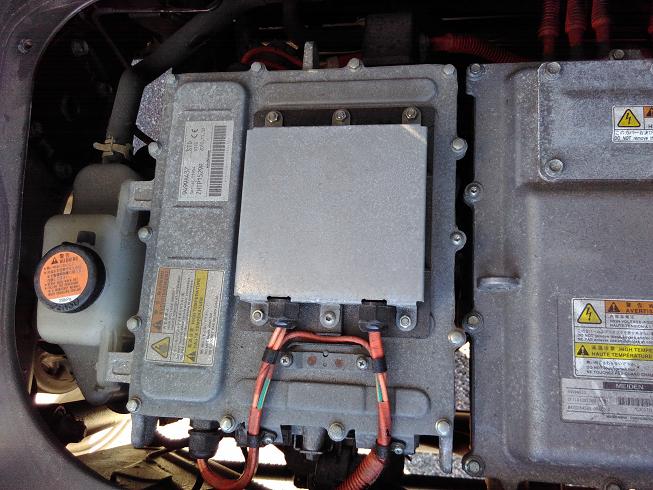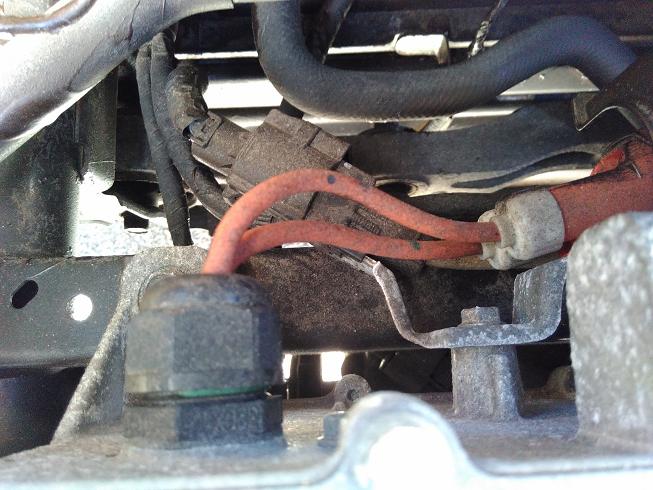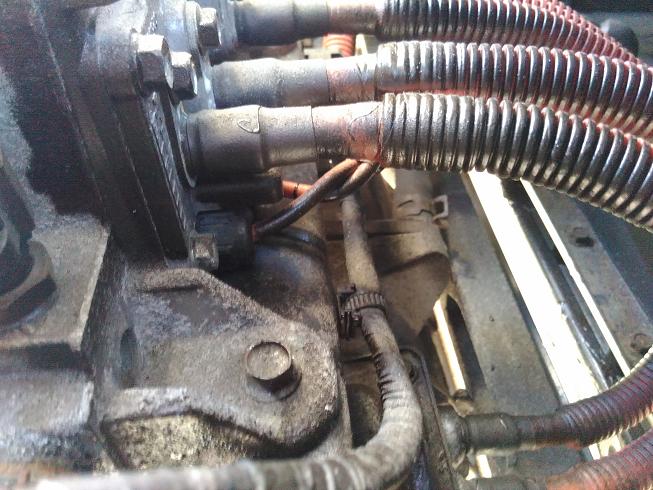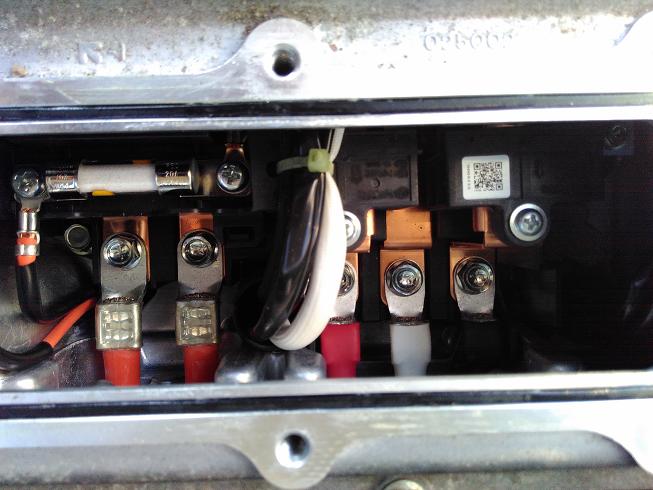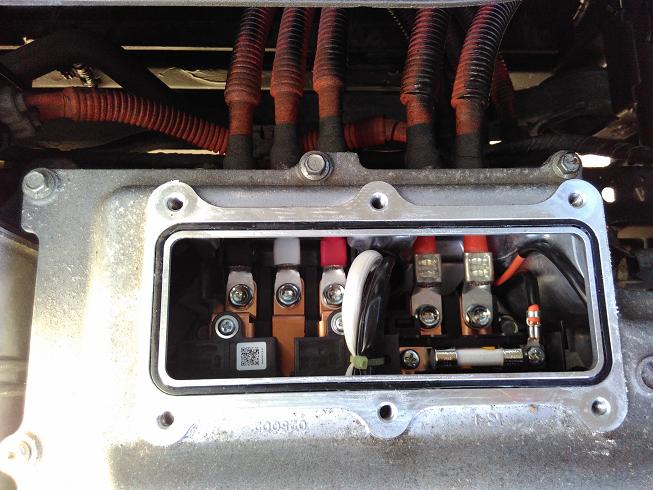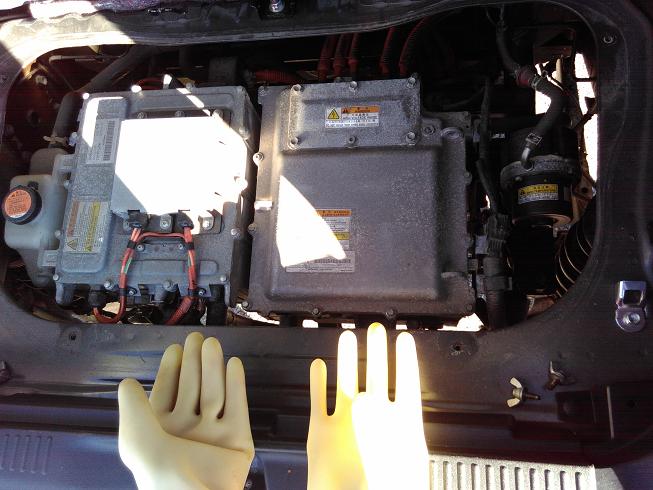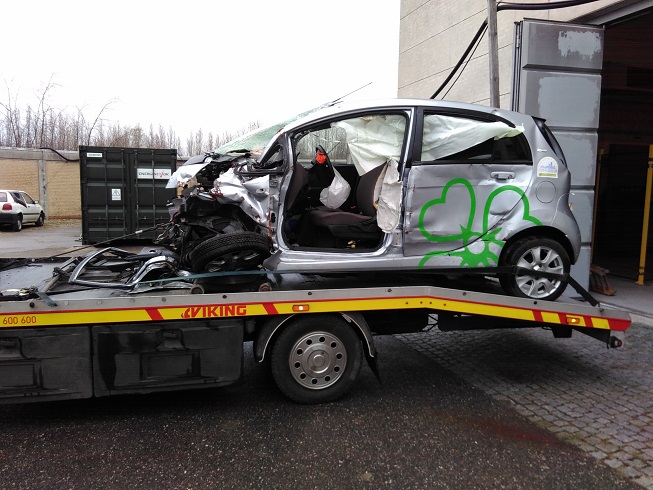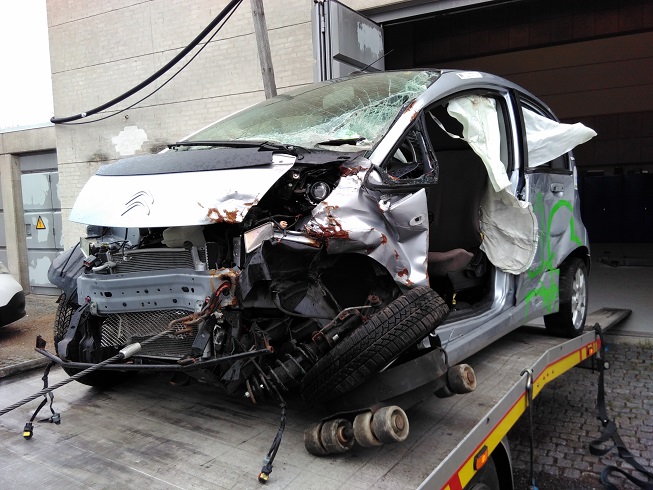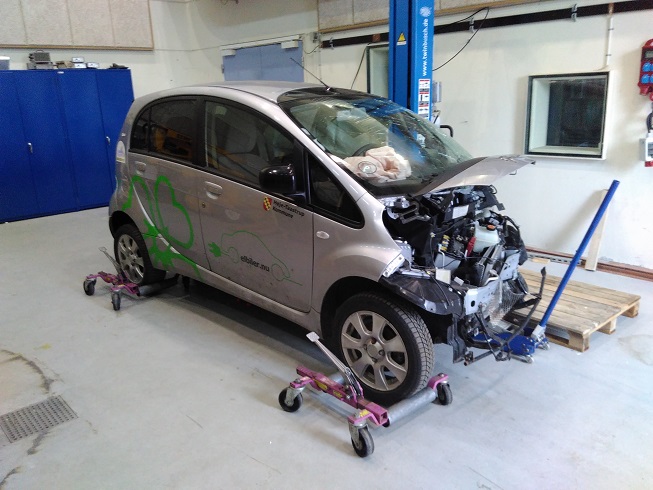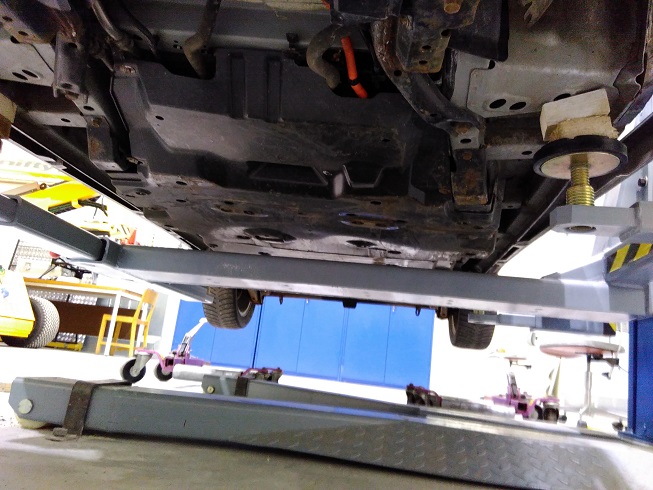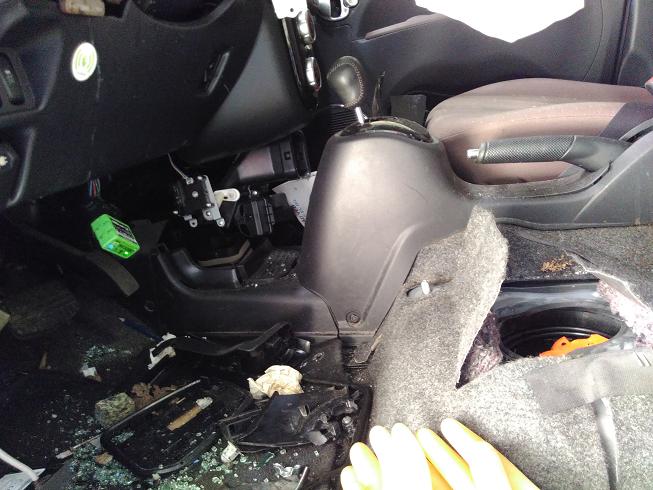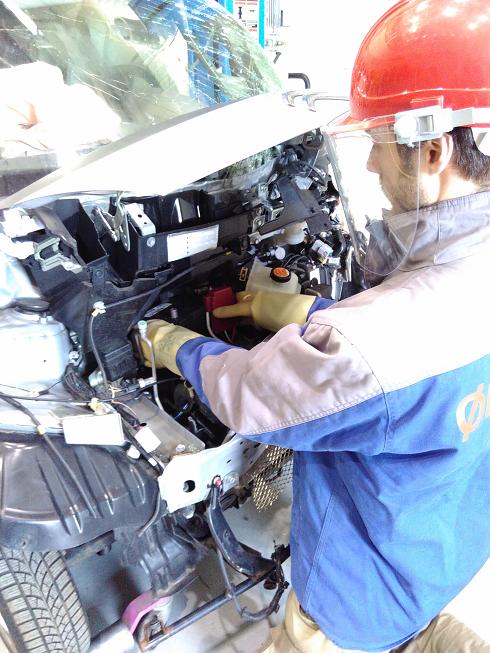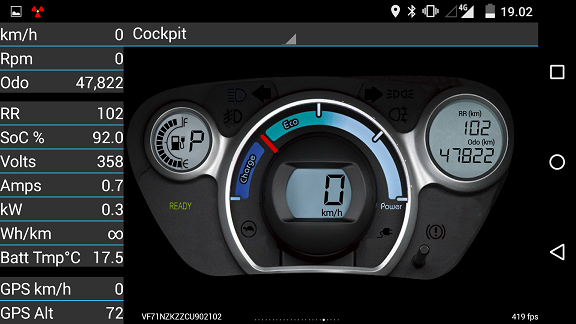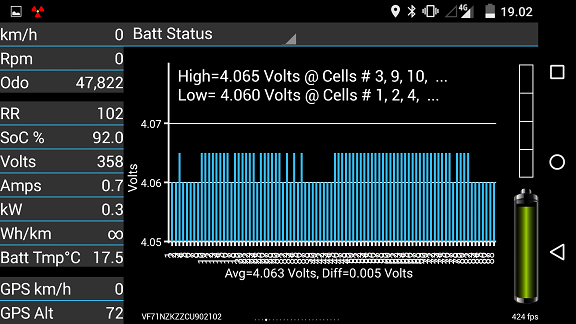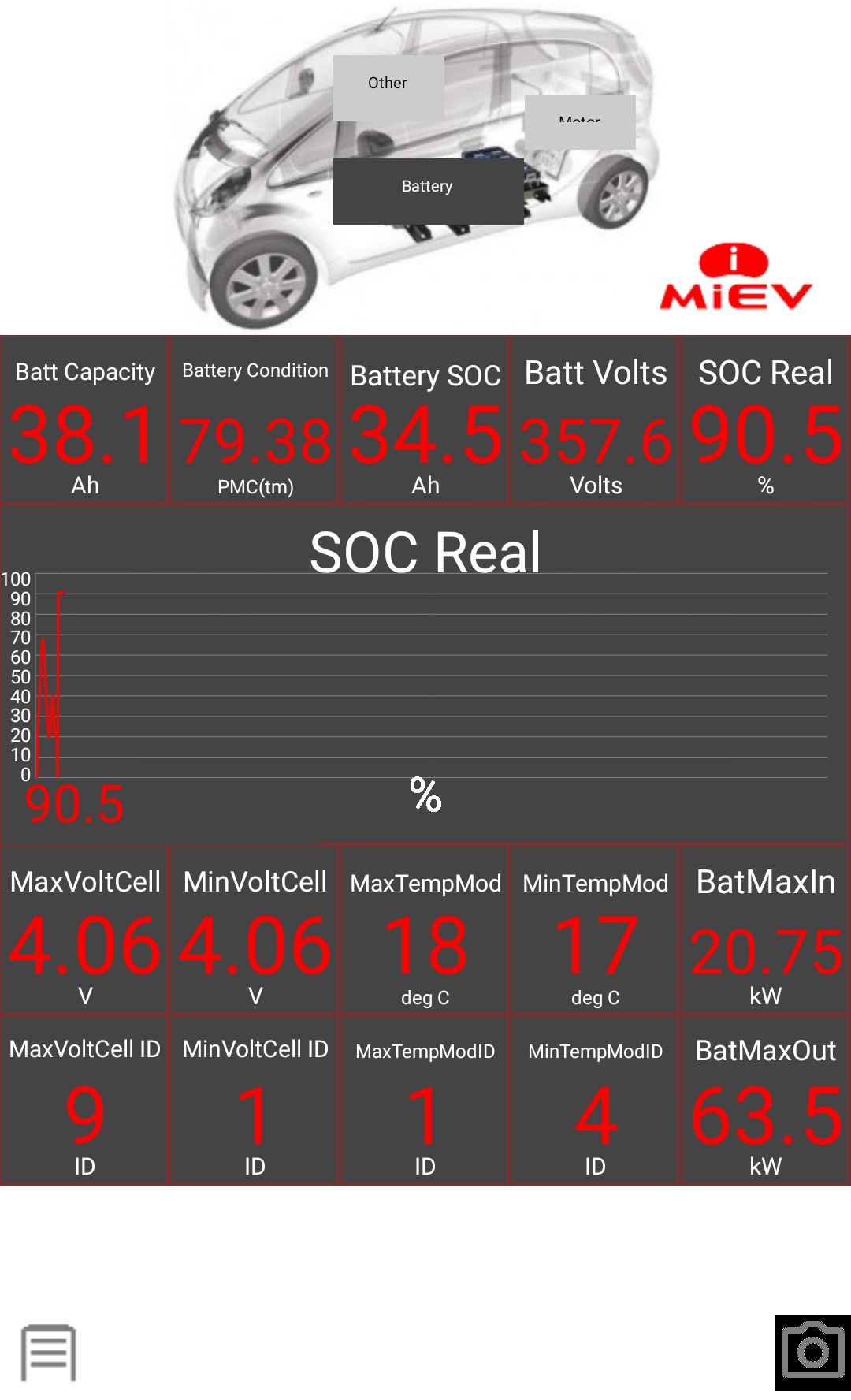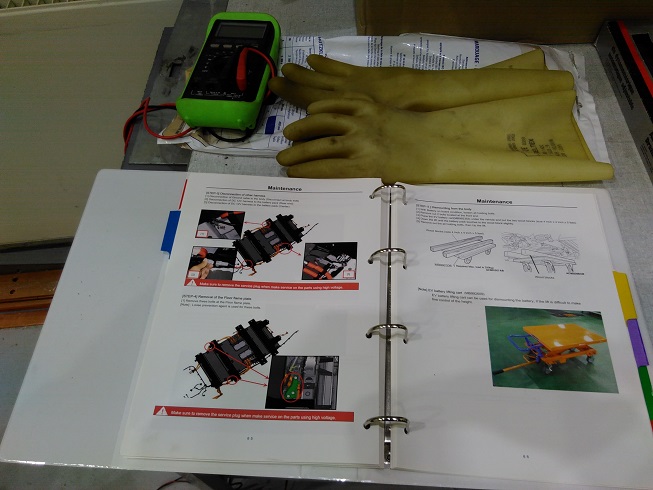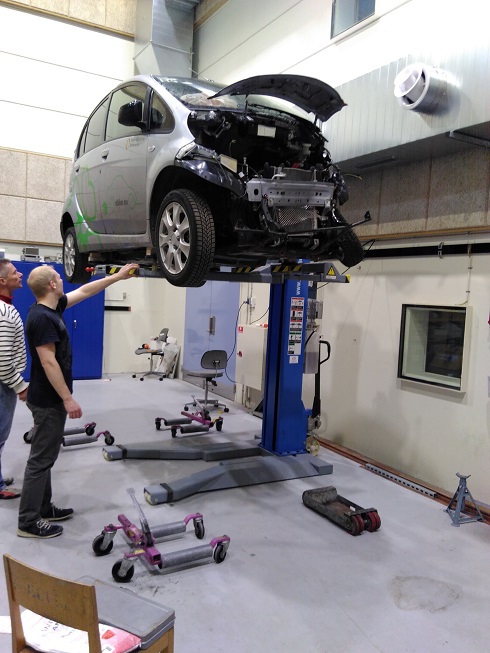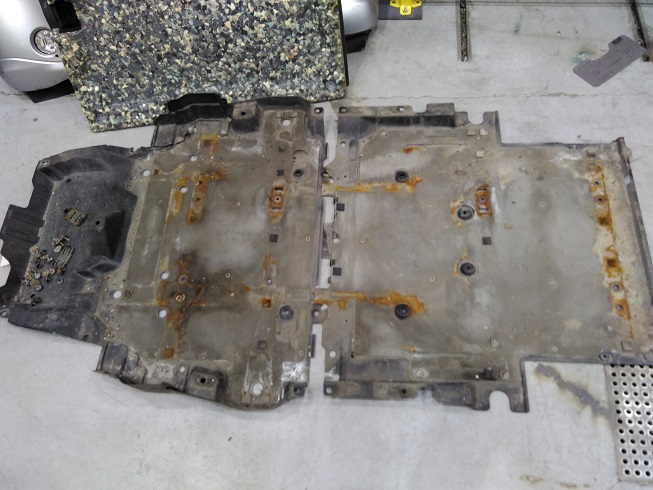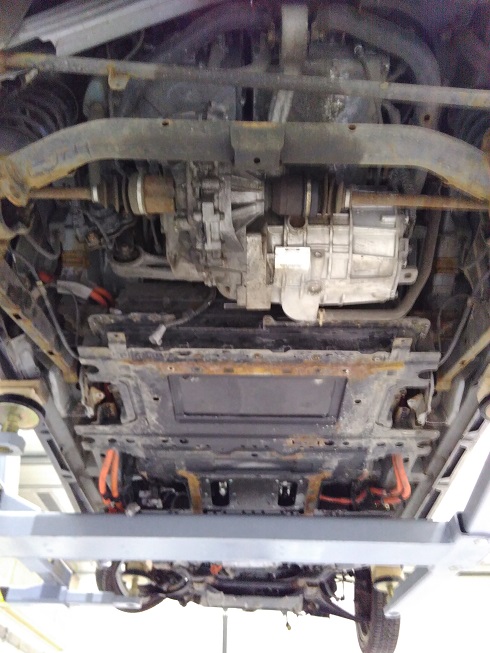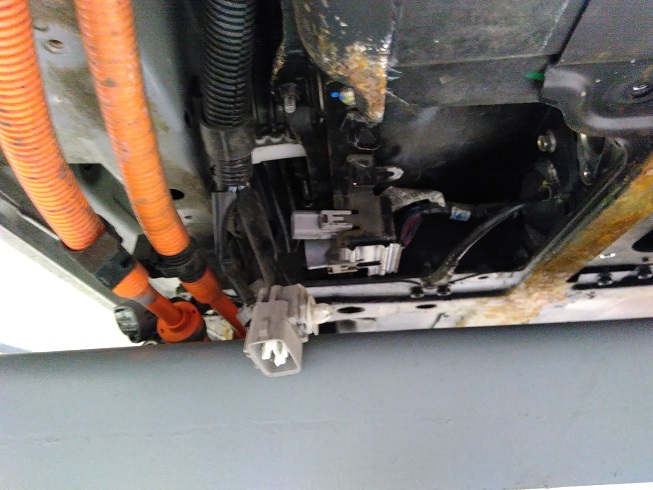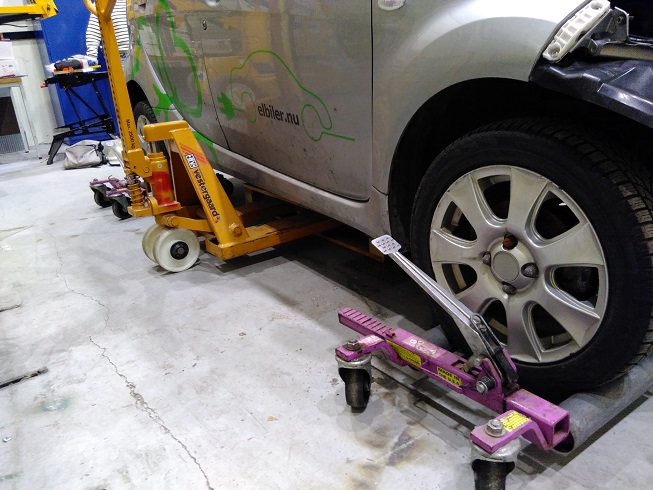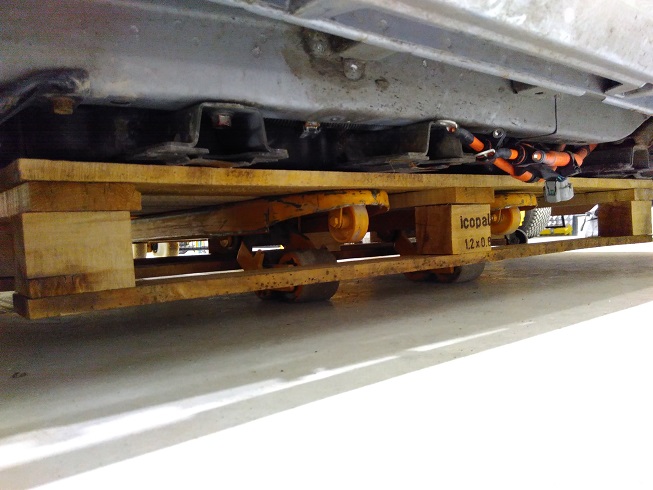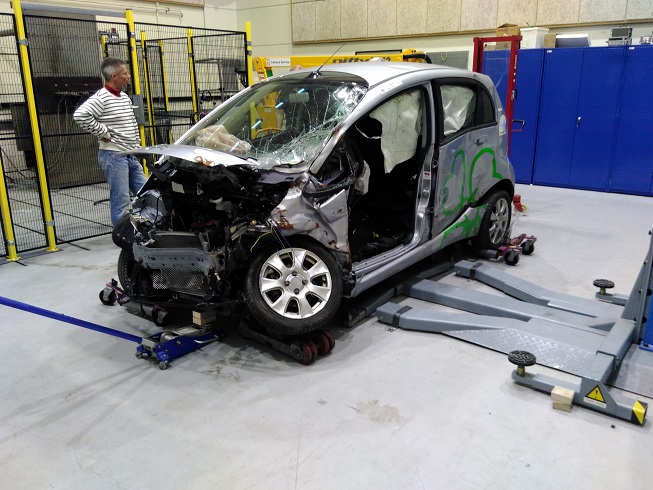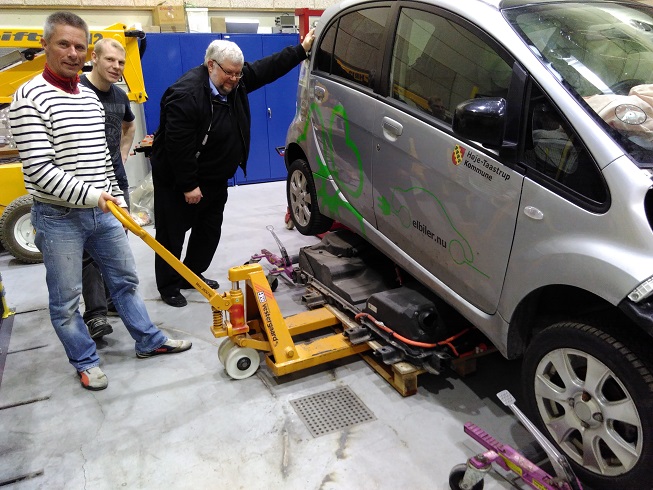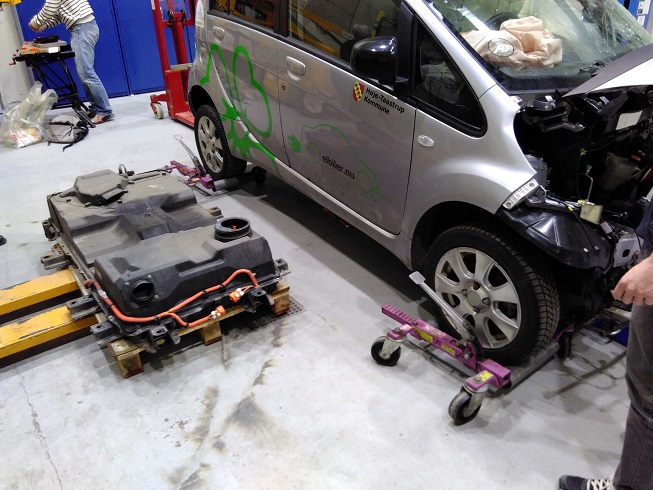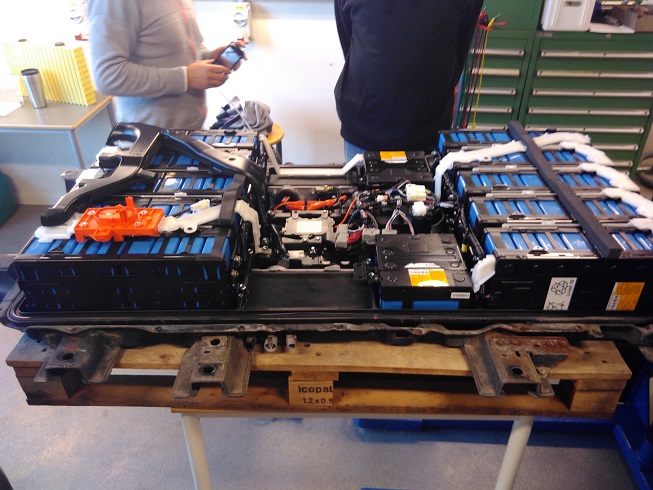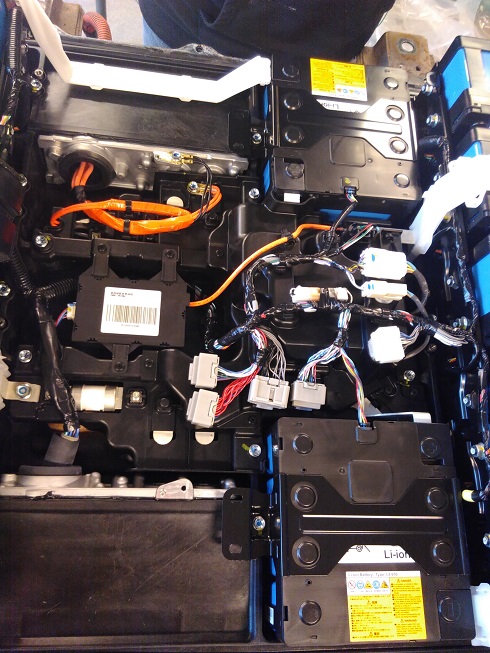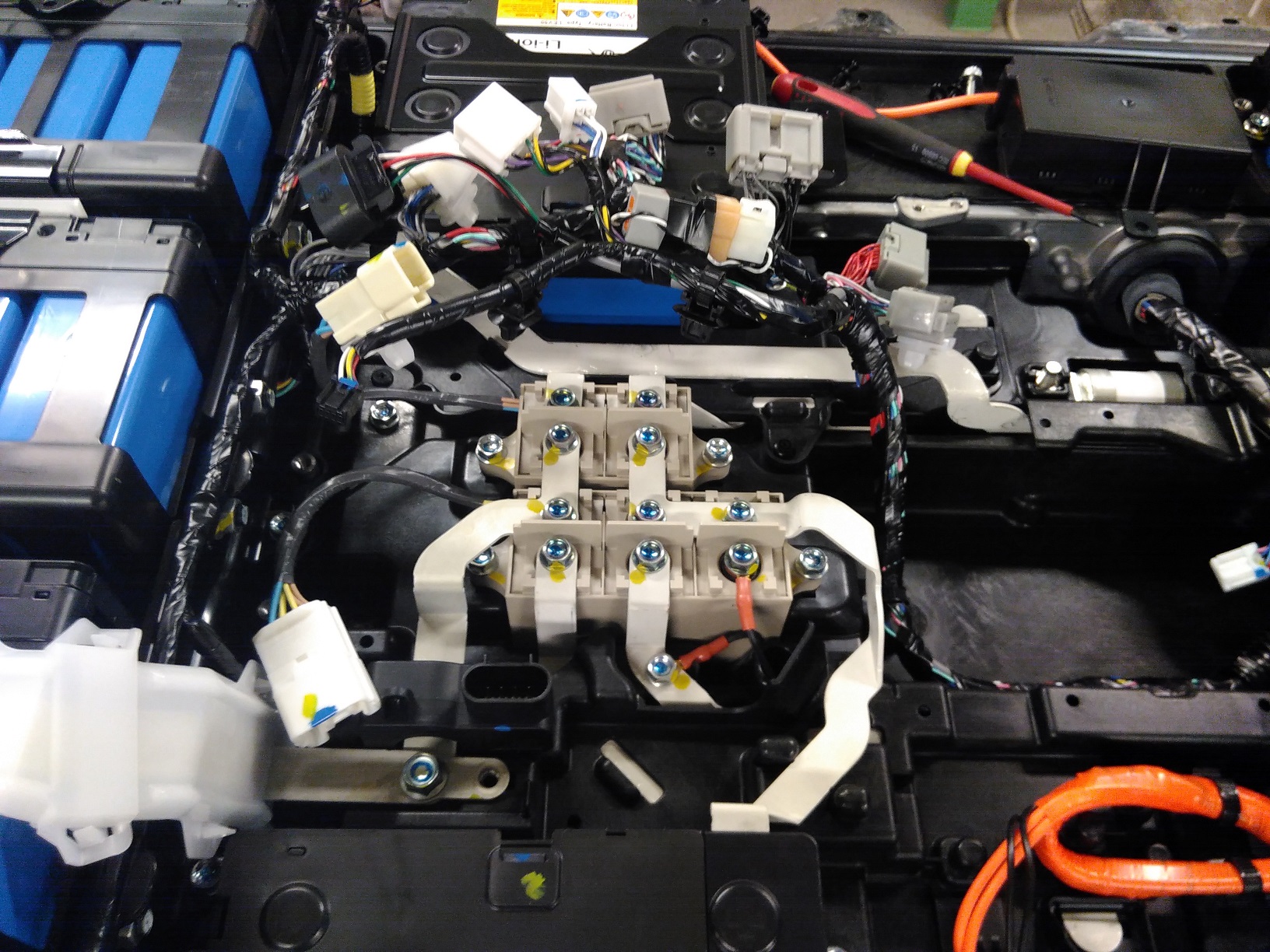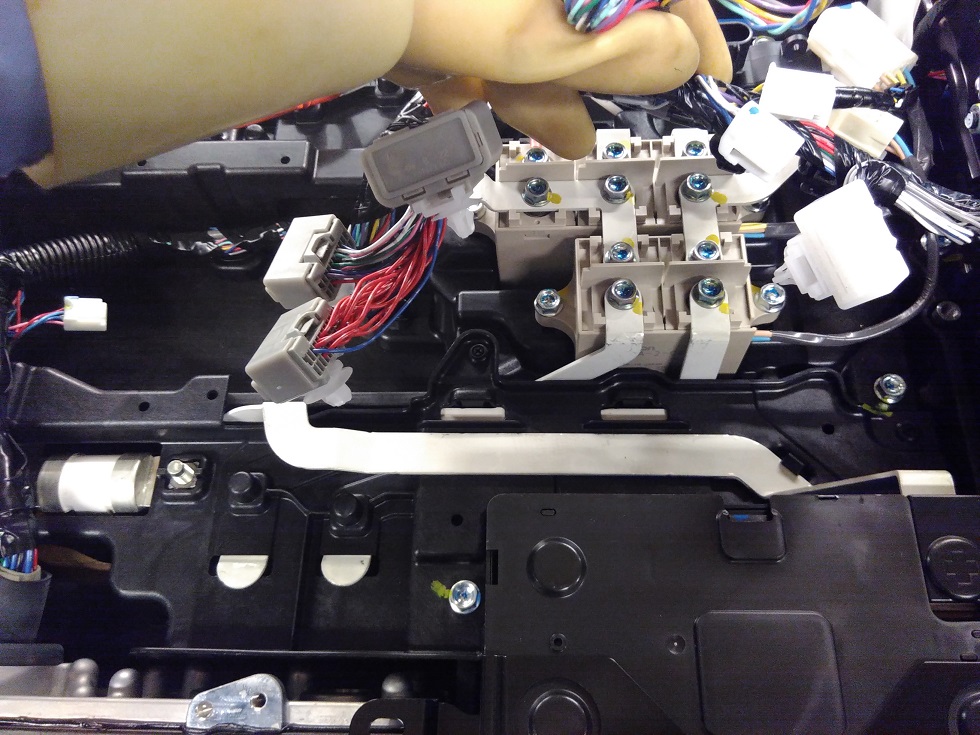A
Anonymous
Guest
Thanks for sharing your insights on adding packs.
I'm offered a wrecked c-zero for 1.500$ and pretty sure I will take the offer.
So I'm thinking to play with connecting the battery pack to the iOn we've got and wondering where exactly is best to connect it so it charges from the level 1 (type 1) inlet/EVSE and also from the CHAdeMO inlet?
Do send a drawing if you can.
(Our iOn has QuickCharge CHAdeMO inlet.)
I'm also considering to split up the pack to fit as much as possible as close to the floor and center of the car as possible. Perhaps try and remove the rear seats for testing. Any experiences on most efficient ways also in terms of getting a level cargo floor?
Please help me understand this piece. Why will the charger output exceed 3,3kW (4kW) if connecting 2 packs?
So I might have a charger from the wrecked car. How do you suggest I wire this second one to the 2nd pack or all together, so the 2nd pack still provides power for the driving and charged fra QC CHAdeMO?
Do make a drawing if you can.
Concerning chargers from emotorwerks I have some unpleasant experiences with their 25kW DC charger. So I bought a 25kW DC unit, CHAdeMO controller and CHAdeMO DIY looking cable. First of all the CHAdeMO controller is unable to charge this car, only worked on Nissan Leaf and Nissan ev van.
Secondly, when connected to 3phase AC input it draws some 48A which caused the attached thermistors (working as inrush-current-limiters) to litterly burn off after a few charges of the Nissan causing some pretty dangerous situations with sparks and stuff. No wonder this happened as datasheet on the thermistors shows current rate at 35Amps.
Thirdly the DC charger seams to have damaged our Nissan battery pack so it now stops charging after barely a minute whether DC or AC charging. With specialist help we measured the output DC to contain more than 20% rippel AC around 87V AC. The specialists mentioned anything above 4% is extremely harmful to lithium batteries.
Fourthly the harmonic distortions of the charger are emence. We measured around 86% THD on full 25kW charge and about 120% when charging less. We found lots of currents flowing at 250Hz, 350Hz and up.. which is damaging to electronics, motors, compressors as currents flowing in 250Hz does flow in opposite direction creating breaking of motors and extra heat/wear in electronics.
In fact we discovered how our own instrument, a more simple one, measured the current flow in 250Hz due to the high distortion, when we would expect this to be measured in 50Hz (EU).
Fifthly we found the charger to have a powerfactor at 0,7 capacitive load meaning its having a huge capacitive load dragging a AC three phase star mains out of balance again causing derating on other connected equipment and failur.
I've brought this to the attention of the company who claims to have sold hundreds of them if not more.
However I have heard no response to my more than 10 calls and emails.
So now I'm stuck with a pollutive and destructive piece of DC charger and CHAdeMO Controller which is unable to charge this CHAdeMO ev.
I'm offered a wrecked c-zero for 1.500$ and pretty sure I will take the offer.
So I'm thinking to play with connecting the battery pack to the iOn we've got and wondering where exactly is best to connect it so it charges from the level 1 (type 1) inlet/EVSE and also from the CHAdeMO inlet?
Do send a drawing if you can.
(Our iOn has QuickCharge CHAdeMO inlet.)
I'm also considering to split up the pack to fit as much as possible as close to the floor and center of the car as possible. Perhaps try and remove the rear seats for testing. Any experiences on most efficient ways also in terms of getting a level cargo floor?
PV1 said:The i-MiEV will shut down if it sees too much power going into the battery during a normal charge. This threshold is pretty close to the max output of the charger (4 kW threshold on a 3.3 kW charger), I guess to protect the charger from overload.
Please help me understand this piece. Why will the charger output exceed 3,3kW (4kW) if connecting 2 packs?
So I might have a charger from the wrecked car. How do you suggest I wire this second one to the 2nd pack or all together, so the 2nd pack still provides power for the driving and charged fra QC CHAdeMO?
Do make a drawing if you can.
Concerning chargers from emotorwerks I have some unpleasant experiences with their 25kW DC charger. So I bought a 25kW DC unit, CHAdeMO controller and CHAdeMO DIY looking cable. First of all the CHAdeMO controller is unable to charge this car, only worked on Nissan Leaf and Nissan ev van.
Secondly, when connected to 3phase AC input it draws some 48A which caused the attached thermistors (working as inrush-current-limiters) to litterly burn off after a few charges of the Nissan causing some pretty dangerous situations with sparks and stuff. No wonder this happened as datasheet on the thermistors shows current rate at 35Amps.
Thirdly the DC charger seams to have damaged our Nissan battery pack so it now stops charging after barely a minute whether DC or AC charging. With specialist help we measured the output DC to contain more than 20% rippel AC around 87V AC. The specialists mentioned anything above 4% is extremely harmful to lithium batteries.
Fourthly the harmonic distortions of the charger are emence. We measured around 86% THD on full 25kW charge and about 120% when charging less. We found lots of currents flowing at 250Hz, 350Hz and up.. which is damaging to electronics, motors, compressors as currents flowing in 250Hz does flow in opposite direction creating breaking of motors and extra heat/wear in electronics.
In fact we discovered how our own instrument, a more simple one, measured the current flow in 250Hz due to the high distortion, when we would expect this to be measured in 50Hz (EU).
Fifthly we found the charger to have a powerfactor at 0,7 capacitive load meaning its having a huge capacitive load dragging a AC three phase star mains out of balance again causing derating on other connected equipment and failur.
I've brought this to the attention of the company who claims to have sold hundreds of them if not more.
However I have heard no response to my more than 10 calls and emails.
So now I'm stuck with a pollutive and destructive piece of DC charger and CHAdeMO Controller which is unable to charge this CHAdeMO ev.




